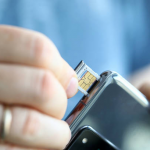Experiencing the circuit breaker tripping each time the microwave door is opened is a clear indication that something is amiss with your kitchen appliance. This article sheds light on possible causes and solutions for why your microwave could be disrupting your home’s electrical safety measures. By understanding the components at play, like door switches and circuits, you can take the necessary steps to address the problem effectively. Whether it’s a simple wear and tear issue or a sign of something more concerning, it’s essential to get to the bottom of why your microwave trips the breakers and resolve it to ensure the safety and functionality of your appliance.
Microwave ovens are equipped with numerous safety features designed to protect users from the dangers of microwaving while the door is open. One such feature is the interlocking system of door switches that interrupt the flow of electricity when the door opens. These safety measures are in place to prevent exposure to microwave radiation, ensuring that the appliance does not operate until the door is securely closed. However, circuit breakers still trip even when these safety protocols are engaged, indicating potential hazards that need to be diagnosed and rectified immediately.

What Happens Electrically When You Open the Microwave Door?
Normally, when a microwave door opens, the electrical circuit that powers the magnetron, the component responsible for generating microwave energy, is interrupted, quickly coming to a safe stop. However, when this action results in a circuit breaker tripping, it suggests there’s an electrical surge or fault that the home’s safety system is detecting and responding to, consequently cutting off power to prevent further damage or hazards.
Why Your Microwave Might Trip the Breaker When Opened
While intended to operate safely under normal circumstances, over time, even the most reliable microwave ovens might develop issues that lead to electrical hazards. Regular wear and tear, such as weakened door latches or degraded wiring, can create conditions where safety mechanisms fail. If your circuit breaker trips when the microwave door opens, it’s a sign that the appliance is drawing more power than it should, which could also indicate an imminent potential for harm.
The Unexpected Consequences of Normal Microwave Wear and Tear
Continuous usage of microwave ovens can lead to the gradual degradation of crucial components. Door switches may wear out, wiring insulation could deteriorate, or the door itself might warp slightly from the heat, causing misalignment. These issues can lead to the microwave drawing excessive power or creating a short circuit when the door opens, which in turn will cause the circuit breaker to engage as a preventive measure.
Common Reasons Behind the Tripping Breaker
The most likely reason a microwave still trips the breaker upon door opening is a problem with the door switches. These switches are responsible for signaling the control board that the door is securely closed before the microwave can be operated. When one or several switches are not working appropriately, they might send incorrect signals, leading to an electrical fault that trips the breaker.
Understanding How a Door Switch Works in Your Microwave
Typically, microwave ovens are designed with multiple door switches that work in conjunction to ensure the appliance functions only when the door is closed. These switches act like a relay team, passing the baton of electrical current only when the door latches into place. Should one switch fail, the entire operation could be compromised, resulting in the breaker tripping as the microwave suddenly attempts to draw power or when the circuit is unexpectedly breached.
Damaged Wiring: An Electrical Safety Perspective
Another significant concern is the wiring within your microwave. Over time, wires can fray, corrode, or become damaged due to heat exposure or other physical factors. This can create dangerous short circuits that not only disrupt your microwave’s functionality but also pose a serious fire risk. The immediate tripping of a breaker upon door opening could be alerting you to such an issue, prompting quick attention.
Spotting the Signs of Electrical Wire Damage
Observing your appliance for signs of damaged wiring is essential. Look for any discolorations, melted insulation, or a burning smell, which are clear indicators of trouble. Hearing a buzzing or arcing noise when the microwave is operating or door opens could also imply that the wire insulation is compromised, and an electrical arc is occurring.

Diagnosing the Issue: Steps to Take Before Calling a Professional
Before you attempt any inspection or repair, safety should be your utmost concern. Make sure the microwave is unplugged and located in an area where you can comfortably access its components. It is crucial to remember that, even when unplugged, microwaves can store a lethal amount of electricity in their capacitors. If you are unfamiliar with the high-risk components involved, it is better to leave the inspection to a professional.
How to Properly Unplug and Check Your Appliance
When unplugging your microwave, pull the plug straight out of the socket to prevent damaging the cord. Allow the appliance to sit for a few minutes to ensure any residual power is dissipated. Then, carefully remove the casing, adhering to your microwave’s manual instructions, to visually inspect the interior components.
DIY Inspection Guide: What to Look for in Door Switches and Wiring
For those who are skilled in DIY appliance repair, here’s a numbered list of what to look for when inspecting the door switches and wiring:
- Check for any obvious signs of damage on the door switches, such as burning or charring.
- Test the continuity of the switches with a multimeter to ensure they function properly.
- Examine wires for fraying or damage which might lead to electrical shorts.
- Look for loose connections that could cause inconsistent electrical flow.
- If the door switches and wiring seem intact, check other components, such as the capacitor and the magnetron.
Trouble with the Door: Diagnosing a Malfunctioning Switch
If you’ve determined that a switch is there that is not working correctly, you may need to consider replacing it. This process usually involves unscrewing the faulty switch and disconnecting its wires—ensuring you document where each wire was attached—and then installing the new switch by reversing the removal process. However, working with electrical components carries risk, and if you are at all unsure, it is safer to seek the help of a professional technician.
Professional Repair vs. DIY: Making the Right Choice
It’s important to recognize your limitations when dealing with appliance repairs. Microwaves involve high voltage components that should not be handled without the proper training and tools. If you’re uncomfortable or unsure about performing any repairs, especially when dealing with electrical issues or if your microwave kept tripping the breaker, calling in a professional is the safest option.
Costs and Considerations for Professional Repair Services
Evaluating the cost-effectiveness of professional repair is important. Here’s a table that compares the potential costs versus the price of replacement:
| Repair Type | Average Cost | Replacement Cost |
|---|---|---|
| Door Switch Replacement | $50-$100 | $100-$300 |
| Wiring Repair | $75-$150 | $100-$300 |
| Magnetron Replacement | $100-$200 | $100-$300 |
As you can see, sometimes the cost of repairing your microwave could also amount to the cost of purchasing a new one, particularly if your microwave is older and might soon need additional repairs.
The Limitations of DIY: Understanding When It’s Out of Your Hand
While we all appreciate the satisfaction and potential savings from a successful DIY repair, we should acknowledge when a task is beyond our skillset. With potentially hazardous components and the need for specialized knowledge, it’s important to avoid risking personal injury or further damage to your appliance. If your microwave still trips the breaker after trying basic troubleshooting, it will need professional diagnosis and repair.

Conclusion
It is both perplexing and concerning when a microwave trips a circuit breaker, especially at such an innocuous moment as opening the door. We’ve explored the primary reasons why this might occur, from faulty door switches to compromised wiring, and outlined steps for diagnosing and resolving the issue. However, it’s important to weigh the risks and benefits of attempting DIY repairs on a microwave, and in many cases, enlisting professional help is the safest and most effective path to a solution.
Frequently Asked Questions (FAQs)
Q1: Can I just replace the door switch to fix the tripping breaker on my microwave?
A1: Replacing a faulty door switch can sometimes resolve the issue, but it’s essential to ensure that’s the only problem. If you’re confident in your ability to diagnose and repair it, you can attempt a switch replacement. Otherwise, consult a professional.
Q2: Is it safe to keep using a microwave that trips the breaker every time I open the door?
A2: No, it is not safe to continue using a microwave that consistently trips the breaker, as it can be symptomatic of a severe electrical fault that might lead to a fire or electrocution.
Q3: Could the issue be related to my home’s electrical system instead of the microwave?
A3: Yes, it is possible that the problem lies with your home’s electrical system, such as a weak breaker or an overloaded circuit. If multiple devices cause the breaker to trip, it might be an electrical system issue.
Q4: What does a microwave door switch do?
A4: A microwave door switch ensures that the microwave only operates when the door is closed. It cuts power to the microwave’s components when the door is open to prevent radiation escape and accidental exposure.
Q5: How can I prevent my microwave from tripping the breaker in the future?
A5: Regular maintenance, such as cleaning, checking for signs of damage, and ensuring the microwave is on a dedicated circuit, can help prevent issues. If your microwave frequently causes the breaker to trip, have it inspected and repaired by a technician to address the issue long-term.


